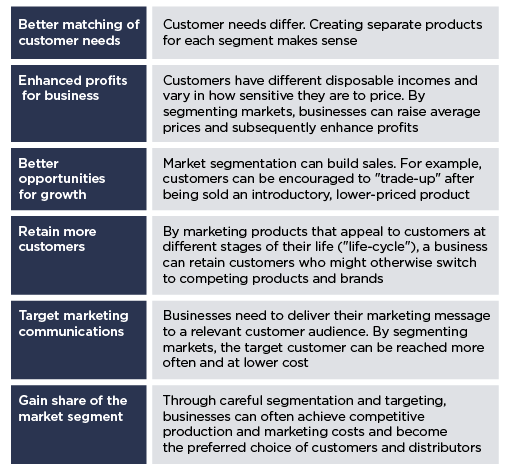Hints and tips
Tip 1
Monitoring the external environment generally falls to departments, units or individuals with an external facing role and those responsible for planning! This includes marketing, external affairs, sales, market analysts and, of course, the Board or senior team.
Larger organisations, and those with shareholders and audited accounts, often publish annual reports for public consumption containing summarised information while others are produced for internal consumption. If you have an organisation chart you may be able to track down the owners of these plans, or those available via an intranet.
As a last resort you may want to ask your line manager. However, part of this challenge is to demonstrate your own initiative and to create a systematic way of building your knowledge, contacts and awareness. Also bear in mind that some documents may have been produced some time ago, that they are based on someone else’s assumptions and analysis, and the environment keeps changing.
Rather than simply replicate what is there, try to do some of your own external research too.
Tip 2
Not all external environmental factors are equally relevant or dominant in your marketplace. Not all are under your personal control.
However, these can offer early warning signals, and can buy time to plan or prepare you for bigger changes coming down the line.
Tip 3
Simple Google searches of industry journal articles, reputable industry bodies, experts, commentators or even customers, can supplement your data gathering. When you are reading these documents then do bear in mind that not everything on the internet is factual or even factually correct.
Sometimes it will be opinion, unsubstantiated data presented as though it were facts, it may have a particular bias or intention to create a particular reaction or impression.
Tip 4
At one time organisations could quite easily see who the key players were in the market they operate in. For many reasons, not least a move towards more global business organisations and the advent of e-business, the picture is less clear. The important thing is to appreciate that organisations compete on many levels.
For example, the HR function may compete with other employers locally to recruit employees with required skills. One organisation may provide a very similar product at a different level of quality or with a different level of service. Another type of competition arises from different solutions to the same customer need and product – e.g. shopping online with delivery versus a supermarket.
Some customers may have alternative ways to resolve their need or want – e.g. to relax and spend leisure time. One customer may participate in physical activity with others, another may want a relaxation therapy, another may read a book.
Tip 5
We might describe competition as being direct (for example one brand of chocolate bar for another in the same price range). We might consider our product within a price range. We might also consider competitors as being indirect (e.g. golf club membership versus a virtual golf experience on a computer). We might also consider competition from possible substitutes (e.g. self-service apps versus purchase from an intermediary).
Tip 6
The level of competition changes under different market conditions. Michael Porter (1979) has described a model of five forces (refered to in Challenge 2 [Tip: hold Ctrl and click a link to open it in a new tab. (Hide tip)] ) which helps to identify how threats can arise from different directions in the market.
Undertaking competitor analysis is a dynamic process. Competition levels fluctuate for many reasons including changes in economic conditions e.g. currency fluctuations which can have an impact on the cost of materials and therefore the viability of products. They can also lead to cost increases or reductions which may reduce or increase the size of the marketplace (buyers or customers) seeking products or services.
Changing social demographics, fashions and external events can also have an impact. In this way we see the inter-relationship of the external operating environment and our organisation and also the wider market place in which we compete with other organisations.
Tip 7
Market sizing is a how organisations calculate their market potential and helps define their competitive strategy. There are a few steps required to understand the size of the market you are in:
Who is your target customer (i.e. the person or organisation that your product solves a problem or need for).
Define the geographical market you are operating in e.g. international, national, regional, local, etc.
What is the total number of target customers that exist in this market – at this point if you have a product or service that is aimed at individual consumers this will be a number less than the total population UNLESS you genuinely have a product that is universally needed.
For a business customer, it will be a calculation of the number of organisations that have a potential need for your products or services e.g. garages, hairdressers, hospitals, farms, etc. depending on the sectors you cover.
Market penetration is an estimate of the total market that you could realistically aim for expressed as a percentage. High penetration, e.g. 70%, would be where your product is mission critical, perhaps to meet regulation.
Lower penetration rates are more typical if there is discretion about the purpose, specialist products or indeed numerous alternative ways or suppliers of meeting the need.
Market volume is calculated by multiplying no. target customers x penetration rate. For example 1000 target customers x 60% penetration rate = 600 customers.
To calculate these numbers. a number of assumptions need to be made and it is well worth sharing your assumptions with colleagues who may have more information and insight to add.
Tip 8
Challenge 4 referred to consumer and business market segmentation. Consumer segmentation uses variables that differentiate between groups within a market, but that are consistent amongst customers, prospects or users within groups. One can identify four bases on which to segment a consumer market.
Geographic segmentation is based on regional variables such as region, climate, population density and population growth rate.
Demographic segmentation is based on variables such as age, gender, ethnicity, occupation, income and family status.
Psychographic segmentation is based on variables such as values, attitudes and lifestyle.
Behavioural segmentation is based on variables such as usage rate and patterns, price sensitivity, brand loyalty and benefits sought.
The optimal ways to segment the market are dependent on the specifics of a situation and are determined by market research, market trends and managerial judgement.
Tip 9
While many of the consumer market segmentation bases can also be applied to businesses and organisations, business market segmentation often leads to segmentation in other ways:
Geographic segmentation is based on regional variables such as customer concentration, regional industrial growth and international macroeconomic factors.
Customer type is based on such factors as the size of the organisation, its industry, position in the value chain, etc.
Buyer behaviour is based on factors such as loyalty to suppliers, usage patterns and order size.
Market segmentation offers the following potential benefits to a business.
In the competitive context of the for-profit sector, the long-term success of a firm depends on managing revenues, resources, costs and productivity effectively. In the public and not-for-profit sectors, performance is more often discussed in terms of efficiency and sound governance.
In an era of declining state funding and devolved budgets, the not-for-profit sector is increasingly looking to commercial practices to understand how to work with private suppliers and partners, and deploying private-sector techniques to raise funds, reduce costs and compete.
Similarly, private-sector companies are increasingly concerned with corporate responsibility and engaging with and building trust amongst the communities they serve. In these ways we can see the lines between public and private sectors blurring.
However, in both situations being commercially aware requires an appreciation of what the organisation exists to do and how it does this.
Tip 10
Challenge 4 considers customers and the premise that not all customers are equal. In the questions you are asked whether you are aware of whether and if so how customers may be differentiated in your organisation in recognition of their different needs but also their differing value to the organisation.
To establish the answers to these questions may be difficult to do unless you work in or are familiar with colleagues in the so-called front facing roles. These are areas such as sales and customer service where the contact with customers is direct, or marketing and product development where the contact may be more indirect but very much have customers at the centre of what they do.
The PARETO effect (Pareto, 1896) describes the situation where around 80% of the business or income comes from 20% of customers. This is not an exact measure, but it does illustrate the fact that the risk of losing some customers has a significant effect and impact on profits. For this reason, many customers have been measuring and monitoring not only how many new customers and orders they receive but also how many they lose after one order, or the value of their purchases over the lifetime of their history with the company (i.e. their lifetime value).
Clearly, these measures will be very different depending on the product or value of a purchase. Purchasing a house is a different order of magnitude to purchasing a packet of mints, for example. The differences manifest themselves in terms of their frequency, value and in the case of mints (though your dentist may not agree) you could theoretically buy a pack every day, whereas if buying a house for yourself, the frequency would be considerably less.
Hence customer management has very different meaning for different organisations. Building relationships with individual customers also has different implications. Some organisations identify their ideal customers with a view to retaining them as long as they can, trying to increase their purchasing frequency or the value of each purchase. This is where customer relationship management (CRM) and loyalty and reward schemes have emerged from.
Often customer relationships will be a front office function – where the customer touches the organisation but increasingly as customers use the self-service options of websites to browse, shop and obtain service, the concept of the customer or user experience comes into this. Hence with automation, the website owner, finance department, accounts receivable and shipping department. for example, often not considered to be dealing with customers, can (often inadvertently) have an impact on the customer relationship through their actions.
Good, responsive service can support the relationship and buying process. Equally not recognising the special nature and value of a large and strategically important account and providing slow or indifferent service can jeopardise the relationship.
You can now go to References and acknowledgements.

